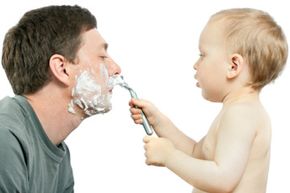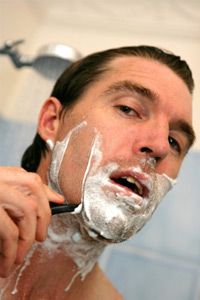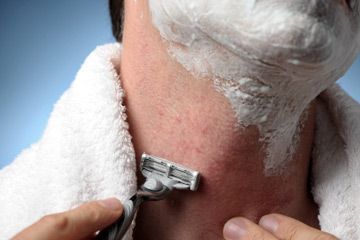For most people, shaving leaves the face, neck or legs soft, smooth and fresh looking. Others aren't so lucky: Shaving means days or even weeks with skin that's sensitive to the touch and has quite visible breakouts. For men, this seems to offer the option of sporting a lifetime beard or presenting to the world a freshly shaved rash where the neck, jaw and cheeks once existed. For women, the dilemma could make for a long summer wearing pants.
But not all of us can run from our shaving problems. Men in the military must shave daily. Societal norms favor smooth, hairless legs for women. People working in the hospitality industry are usually required to project a clean-shaven visage. For those of us prone to shaving rash, the world has some painful customs, demands and expectations when it comes to the length of hair we're expected to maintain on our faces and bodies.
Advertisement
What exactly is shaving rash? It's different from what's commonly called "razor burn." Razor burn is mild skin irritation following shaving due to a dull razor or insufficient use of moisturizer or a shaving lubricant. Razor burn can also occur when sweat or chemicals (such as lotions with fragrances or deodorant) make contact with the multitude of tiny nicks and cuts shaving creates in the skin, which we normally don't detect unless we really give ourselves a good slice.
Shaving rash -- also called shaving bumps, razor bumps or pseudofolliculitis barbae -- is quite a step up on the irritation scale from razor burn. It occurs when recently shaved hair grows back into the skin, becoming an ingrown hair.
How and why does hair grown into the skin? What can be done to prevent it? Is growing a bushy mountain-man beard totally off the table as an option? See the next section to find out.
Advertisement



